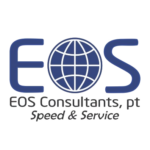Determine the specific focus of the capacity building efforts. This could include training individuals within an organization, establishing a team dedicated to environmental document assessment, or developing expertise in a particular sector or region.
Assess existing knowledge and skills: Conduct a thorough assessment of the current knowledge and skills of the individuals or team involved in environmental document assessment. Identify any gaps or areas that require improvement. Provide training and education:
Develop a comprehensive training program that covers the necessary technical, legal, and regulatory aspects of environmental document assessment. This may involve workshops, seminars, online courses, or specialized training programs conducted by experts in the field.
Foster collaboration and networking: Encourage collaboration and knowledge sharing among professionals involved in environmental document assessment. This can be achieved through networking events, conferences, and online platforms where individuals can exchange ideas and best practices. Establish quality control mechanisms: Implement quality control mechanisms to ensure consistent and accurate assessment of environmental documents. This may include developing standardized review procedures, establishing peer review processes, or creating guidelines and checklists for assessing different types of documents. Access to resources and tools:
Provide access to relevant resources, such as databases, reference materials, and software tools that facilitate the assessment process. This can help streamline the evaluation process and enhance the efficiency of document review.
Continuous learning and updates: Environmental assessment practices and regulations are subject to change over time. It is crucial to establish mechanisms for continuous learning and staying updated on the latest developments in the field. This can be achieved through regular training refreshers, participation in professional development activities, and engagement with relevant professional associations or regulatory bodies.
Monitor and evaluate progress: Regularly monitor and evaluate the effectiveness of the capacity building efforts. This can be done through feedback from trainees, tracking improvements in the quality of assessments, and measuring the impact of capacity building on overall environmental decision-making processes. By following these steps, individuals and organizations can enhance their capacity to effectively assess and evaluate environmental documents, leading to more informed decision-making and improved environmental outcomes.
